The first European tourists, the Argonauts, came to Georgia to search for the legendary Golden Fleece, approximately before 1000 BC. It is thought that the Golden Fleece may have been referred to the practice of using sheep’s hides to pan for gold in Georgia’s mountain streams, a practice still known to this day.
Day 1. Arrival
Arrival at the Kutaisi International Airport. Transfer to the hotel. Time at leisure.
Kutaisi was founded about 40 centuries ago, the former capital of the Georgian kingdom – Colchis, with which the myth of the Argonauts is associated. Like many Georgian cities, Kutaisi is not only beautiful, but also interesting in architectural, historical and cultural terms. Tangled streets, crooked alleys, one-two-story houses with hanging verandas immersed in greenery, located one above the other, as if climbing the steep slopes of mountains on the right bank of the Rioni, have preserved traces of medieval architecture.
Visit to the Gelati Monastery. Complex founded by King David Agmashenebeli (Builder) in 1106 on a hill above the valley of the Tskal-Tsitela River, not far from Kutaisi. The territory of the monastery is surrounded by a fortress wall and consists of 5 buildings: the main Cathedral of the Assumption of the Virgin (built in 1106), from the east of the main cathedral is the Church of St. George (XII century), the two-tiered Church of St. Nicholas (XII-XIV centuries .), Academy building, refectory, bell tower. The Gelati Monastery has preserved a great number of wall paintings dating back to the 12th-18th centuries. The Gelati monastery complex is included in the UNESCO World Heritage List.
Visit to the Motsameta Church (“Holy Martyrs”), located in an amazing area on a high rock ledge. Motsameta means “martyrs” in Georgian. · In the only Church of the ensemble there is a sarcophagus with the incorruptible relics of the martyrs of the 8th century – Princes David and Constantine. The first mention of the monastery was in the VIII century. The story tells about the cruel Arab ruler Marwan, who destroyed everything in his path. The small church, located on the site of the monastery, was also destroyed. The present time is a small, very beautiful monastery with round turrets crowned with pointed hipped domes. The monastery stands above the stormy river Rioni and is buried in the greenery of coastal vegetation.
Night in Kutaisi
Day 2. Kutaisi - Martvili
Visit to the Bagrati Cathedral – one of the best examples of late medieval architecture, is distinguished by exquisite, harmonious proportions, graceful decor varieties and a common interior space. The Bagrati Cathedral is a cruciform building with a dome resting on four powerful pillars, and its eastern, southern and northern branches end in semicircular apses. Its western transept was used to house the choir. The vases and capitals were covered with moldings, the walls and floor were decorated with mosaics, fragments of which are still visible. In 1994, the Bagrati Cathedral was listed as a UNESCO World Heritage Site.
Visit to the Sataplia reserve. In the reserve you can see architectural monuments and unique geological objects, traces of real dinosaurs and Sataplia karst caves. Dinosaur footprints are a piece of limestone rock. Scientists have determined that the footprints date back to the Cretaceous period, which means they are about 160 million years old. The size of the caves and their topography are amazing. Getting here, the feeling does not leave that this is a real underground kingdom, where unusual living creatures live. Karst-type caves are famous for growths – stalactites and stalagmites, which are formed when water seeps through stones and rocks.
Visit to the Canyon of Martvili – one of the most amazing places not only in Samegrelo, but in the whole of Georgia and is sometimes called the Georgian “Jurassic Park”. White limestone cliffs, in which the stormy, then quite unhurried Abasha River made its way, appeared in the Mesozoic era. It was they who formed the modern Martvili Canyon, rising above the water in some places by 30-40 meters. Archaeological excavations were once carried out here, and scientists discovered fossilized remains of dinosaurs at the bottom of the canyon and on its steep “banks”. The age of these finds is more than 75 million years. The canyon consists of two parts – upper and lower. In the upper canyon they ride boats, and in the lower canyon they just walk and swim there.
Visit to the Monastery of Martvili . The approximate date of foundation of the monastery is the 7th century. The most impressive building on the territory of the monastery is the Assumption (Martvili) Cathedral. It was built in the 10th century and at that time was the first large-scale cathedral in Georgia. To the northeast of the Assumption Cathedral is a small church – the Chikvani temple, also built in the 10th century. A stone tower is located on the western side of the cathedral. Martvili Monastery, due to its location on a hill, is visible from almost anywhere in the city. Picturesque views of the surroundings open up from the territory of the monastery.
Visit to the Salkhino Palace – the summer residence of the Megrelian princes Dadiani, built in a secluded place in the 1830s. The palace was built for Prince Levan Dadiani, who became famous for his incredible love of wine. Moreover, this is one of those few places in Samegrelo where Ojaleshi grapes are produced. The palace is located on the banks of the Tsachkhura River. The plan of the palace, with its oak pillars and beautifully decorated arch, fully justifies the name of the Salkhino Palace, which means “Feast”. The garden was designed by Italian designer Zeb Lambert. At the end of the garden there is a wine cellar built in the 18th century.
Night in Martvili
Day 3. Martvili - Nokalakevi - Poti - Batumi
Visit to the fortress-city Nokalakevi, the capital of Egrisi, the site of the legendary city of Aya, where, according to legend, the Argonauts sailed. A Georgian city has been located on this site since ancient times. Greek authors called it Archeopolis, but in older Georgian chronicles the city was known as Tsikhe Goji. According to historical chronicles, the city was founded by the eristavi Egrisi Kuji in the 3rd century BC. On the territory of the fortress, ceramic and bronze items, jewelry, copper and gold coins, both locally produced and imported, were found. On the territory of Nokalakevi, crypts-tombs of the pagan period were also discovered.
Visit to the Shkhepi Fortress. For the fortress, such a mountain was selected, from where the Colchis lowland is visible at a glance. Observation from here could be carried out over a vast territory, and the castle directly controlled the main highway passing at the foot of the mountain. Now the central tower, the heavily damaged eastern tower and the foundation of the western part have remained from the fortress. Inside you can find fragments of Qvevri, which suggests that the fortress had its own wine storage. It is considered a very ancient building. The fortress is multi-layered. The main layer of the castle belongs to the period of early feudalism.
Visit to the National Reserve of Kolkheti. The reserve was opened with funds from the Global Environment Facility and the World Bank. Today, the territory of the National Park is 28,940 hectares, including 500 hectares of the Colchis State Nature Reserve, established in 1947. Most of the area is swampy and is a migration route for Eurasian and African birds. It is here that you can see about 194 species of various birds. In addition, there is an amazing flora and fauna, rich in rare species. For instance. endangered species of otters, newts, nutrias live in the Kolkheti National Park. The park has developed water tourism, diving, boating and horseback riding.
Night in Batumi
Day 4. Batoumi - Makhuntsetin - Batoumi
The mountainous Adjara – first of all, mountains, waterfalls and river gorges. These are small authentic Georgian villages with strict morals and centuries-old traditions. These are ancient fortresses, ancient churches and unique arched bridges. Deep rocky gorges with steep passes and full-flowing rivers Chorokhi, Adzharistskali, Choloki, Korolistskhali and others are hidden between the mountain ranges.
Departure for Makhuntseti. The first stop is in a wonderful beautiful place where the mountain rivers Chorokhi and Adjaristskali meet. Chorokhi is a mountain river flowing not only in Georgia, but also in Turkey. Moreover, with a total length of the river of 438 kilometers, only 26 kilometers fall on Georgian lands. The Adzharistskali River is a picturesque natural landmark of Adjara. Adjaristskali originates on the Arsian Range and is the right tributary of the Chorokhi River. Its length is 90 kilometers, the basin area is 1500 square kilometers. In the area of the village of the same name, a hydroelectric power station was built on the river.
Visit to the Makhuntseti Waterfall. The magnificent waterfall is the real pride of mountainous Adjara. Here you can watch how crystal clear water, falling from a great height, breaks on the rocks. The height of the waterfall is more than 30 meters and you need to walk to it about half a kilometer up from the highway. In summer, you can swim in a small pool where water falls from a waterfall. Splashes flying around from falling water cool the air, making it quite humid. Pure mountain water flows in a continuous stream in the spring, which flows into a full-flowing river. In summer, the waterfall plays with colored tints in the sun.
Visit to the bridge of Queen Tamara. The bridge was built in the 11th century from volcanic boulders, its length is 30 meters, and the height of the arch at the highest point is 5 meters. It got its name thanks to the then ruler Queen Tamara – it was by her will and decree that such arched bridges began to be erected. The dimensions of the Makhuntseti bridge allow it to be called the largest among its relatives, and its approximate age is 900 years. Building material was taken from the fragments of nearby rocks, and lime mortar connected them together. It seems that the construction and materials are simple, but the bridge has survived more than one earthquake and almost a thousand years.
Visit to the fortress of Gonio. The fortress of Gonio-Apsaros is a real paradise for lovers of historical and cultural values. Historical facts testify that the fortress was of great political, economic and cultural importance for the Eastern Roman Empire. In 1-3 centuries. n. e. a theater and a hippodrome functioned here. One of the 12 apostles of Christ – Matthew was buried here. In the 6th-8th centuries the fortress belonged to the Byzantine Empire. In the 13th-14th centuries it was restored by the Genoese. The name “Gonio” comes from the city of Genoa. On the territory of the fortress there is a grave, which today is considered to be the grave of the Apostle Matthew – one of the twelve apostles of Jesus Christ.
Observation deck over Gonio. The observation deck is located on the top of a mountain above the village of Gonio, offering stunning views of the Black Sea coast from the Turkish border to Batumi on one side and many mountains on the other. In the center of the observation deck there is a large cross, which is illuminated at night and is visible from afar.
Night in Batumi
Day 5. Departure
Sightseeing tour of the city of Batumi. The first information about Batumi belongs to the Greek philosopher Aristotle and refers to the 4th century BC. He described a city called Batumi. At present, the city combines the charm of a southern city and a seaside resort. A visit to the main square of the city, on which stands the statue of Medea with the Golden Fleece, as a reminder that the Colchis and ancient civilizations coexisted here since ancient times.
Visit to the Seaside Park and the old city district, which is full of cafes, shops and churches. The streets of Old Batumi are decorated with ornaments of nameless mythical creatures. The city tour includes a visit to the Artists’ District (exhibitions of local artists are periodically arranged in this area), Dolphinarium, dancing fountai
Transfer to the airport of Batumi.
The price of one person $ (US Dollars)
From 55 USD
The price depends on the number of people and varies(±) from 55 USD for one day.
Price Includes: Transport, Accommodation, Service of guide.
The cost of each excursion is discussed individually.
*Timetables : on request
| Nomber of persons | 1-3 per | 4-8 per | 9-19 per | 20-40 per |
| Mode of transport | Sedan | Minivan | Minibus | Bus |
For more information, do not hesitate to call or writeViber/WhatsApp +995 599 25 65 19 or in mail:info@georgiavoyage.ge![]() We are always ready to advise you and answer all your questions, regarding the organization of tourism and recreation in Georgia.
We are always ready to advise you and answer all your questions, regarding the organization of tourism and recreation in Georgia.
*The tour programs are based on our experience and the opinions of our completely different customers. These are semi-finished circuits, whose programs can be easily redone. Add or subtract the number of excursion days. Sort or redo the excursion day, change the sequence, the duration, prices …
Every day excursion is a stand-alone destination. It is the separate route with the calculation of the distance and the comfortable movement between the excursion points. Each tour and each itinerary is examined at the time of the request. Also, at the desire of the tourists, they can change the already booked and paid program.





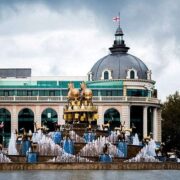


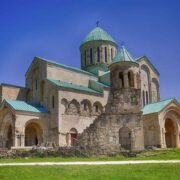



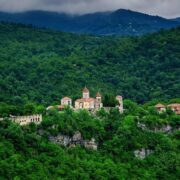

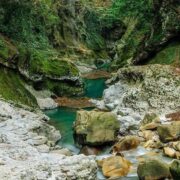
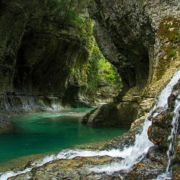
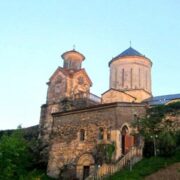

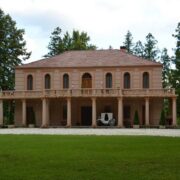
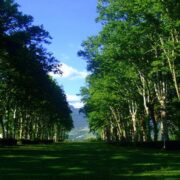
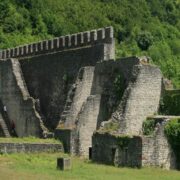



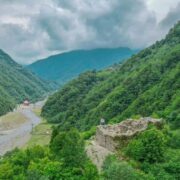
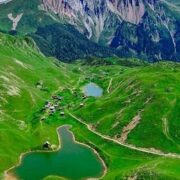

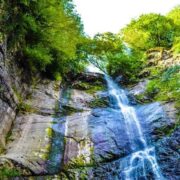


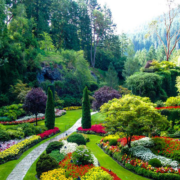


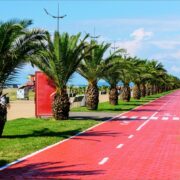



Tour Reviews
There are no reviews yet
Leave a Review